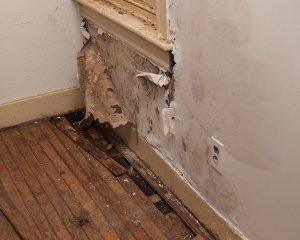Mastering the Six Most Common Water Leaks: Tips for Homeowners
Mastering the Six Most Common Water Leaks: Tips for Homeowners
Blog Article
We've stumbled upon this post relating to How to detect water leaks in your home directly below on the net and figured it made sense to share it with you here.

Leakages not just create waste of water however can likewise trigger unnecessary damage to your residence as well as advertise undesirable organic growth. However, water leakages could go undetected considering that the majority of the pipework in our house is hidden. By comprehending as well as looking for daily situations that cause leakages, you can secure your home from future leaks and unneeded damage. Today, we will consider 6 leak causes that might be creating your pipes to drip.
Instantaneous temperature level changes.
Severe temperature level changes in our pipelines can cause them to increase and get unexpectedly. This development as well as contraction might cause fractures in the pipelines, particularly if the temperature level are below freezing. It would be best if you kept an eye on just how your plumbing works. The presence of the formerly discussed conditions frequently shows a high risk.
Rusty water systems
As time goes by, your plumbing system ages and rust such as corrosion might start eating away the pipelines. This might be the root cause of discoloration or warping on your pipes. This requires an evaluation with your plumber immediately. If our plumbing system is old, take into consideration replacing the pipes because they go to a higher danger of rust than the more recent designs.
Faulty Pipe Joints
The point at which your pipelines connect is frequently the weakest link in the waterline. Pipe joints can deteriorate over time, resulting in water leaks. The bulk of pipe joints are not quickly visible. If you have noisy pipelines that make ticking or banging sounds, specifically when the warm water is activated, your pipeline joints are most likely under a great deal of stress. It is suggested to have your plumber evaluate your system annually.
Encroaching origins
Many water leaks begin outside your house instead of inside it. If you discover a sudden decrease in water stress, state in your tap, take time to head out as well as examine your yard. You could notice damp spots or sinkholes in your yard, which may imply that tree roots are attacking water lines causing water to permeate out. You can have your plumber look for intrusion, specifically if you have trees or bushes near your residential property.
Poor Water Connectors
At times, a leakage can be caused by loosened hoses as well as pipes that supply your appliances. In situation of a water connections leak, you may see water running directly from the supply line or pools around your devices.
Obstructed Drains
Clogged drains pipes could be frustrating and inconveniencing, however they can occasionally end up creating an overflow resulting in break pipes. Keep eliminating any kind of materials that may drop your drains that might obstruct them to avoid such troubles.
All the above are sources of leakages however not all water leakages result from plumbing leaks; some leaks may originate from roof leaks. All leaks must be repaired right away to stay clear of water damages.
Leaks not only trigger waste of water however can additionally cause unnecessary damage to your house and also advertise undesirable organic growth. By looking and understanding for everyday circumstances that trigger leakages, you can secure your home from future leaks and unnecessary damage. Today, we will look at six leak causes that might be causing your pipes to drip.
At times, a leak can be caused by loose hose pipes and pipes that supply your home appliances. In situation of a water links leakage, you may observe water running directly from the supply line or pools around your devices.
How To Check For Water Leak In Your Home
How To Check for Leaks
The average household's leaks can account for nearly 10,000 gallons of water wasted every year and ten percent of homes have leaks that waste 90 gallons or more per day. Common types of leaks found in the home are worn toilet flappers, dripping faucets, and other leaking valves. These types of leaks are often easy to fix, requiring only a few tools and hardware that can pay for themselves in water savings. Fixing easily corrected household water leaks can save homeowners about 10 percent on their water bills.
To check for leaks in your home, you first need to determine whether you're wasting water and then identify the source of the leak. Here are some tips for finding leaks:
Take a look at your water usage during a colder month, such as January or February. If a family of four exceeds 12,000 gallons per month, there are serious leaks.
Check your water meter before and after a two-hour period when no water is being used. If the meter changes at all, you probably have a leak.
Identify toilet leaks by placing a drop of food coloring in the toilet tank. If any color shows up in the bowl after 10 minutes, you have a leak. (Be sure to flush immediately after the experiment to avoid staining the tank.)
Examine faucet gaskets and pipe fittings for any water on the outside of the pipe to check for surface leaks.
Undetected water leaks can happen without the home or business owner even realizing. If you suspect a water leak, but not able to find the source. It is time to contact a professional water leak detection service, The Leak Doctor.
How To Find a Water Leak In Your Home
https://www.leakdoctor.com/blog/How-To-Check-For-Water-Leak-In-Your-Home_AE197.html

As a keen reader on Most Common Causes of Leaky Pipes, I imagined sharing that piece of content was sensible. Sharing is good. Helping people is fun. I value reading our article about Common Water Leaks In House.
Book Service Report this page